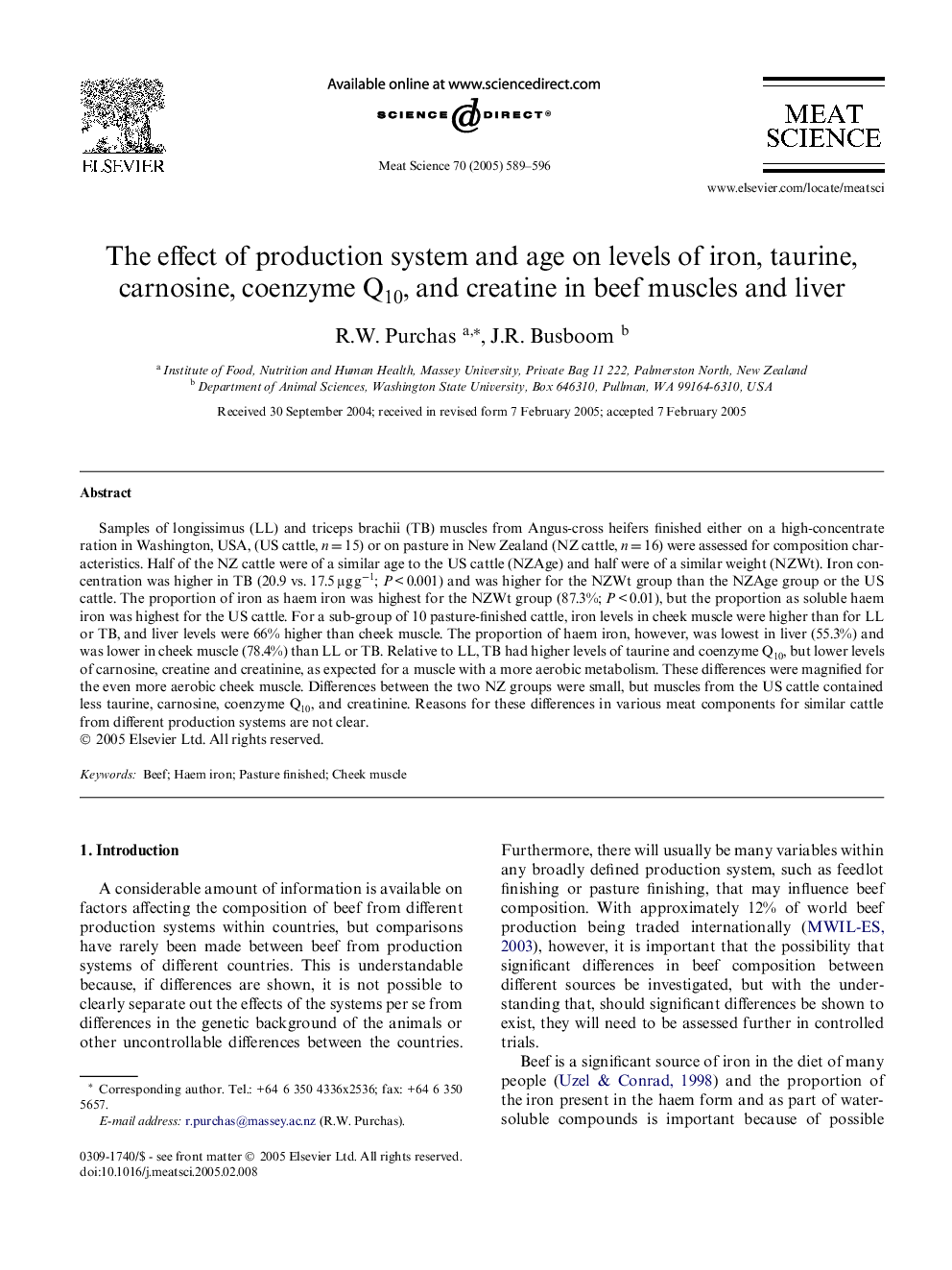| Article ID | Journal | Published Year | Pages | File Type |
|---|---|---|---|---|
| 8983511 | Meat Science | 2005 | 8 Pages |
Abstract
Samples of longissimus (LL) and triceps brachii (TB) muscles from Angus-cross heifers finished either on a high-concentrate ration in Washington, USA, (US cattle, n = 15) or on pasture in New Zealand (NZ cattle, n = 16) were assessed for composition characteristics. Half of the NZ cattle were of a similar age to the US cattle (NZAge) and half were of a similar weight (NZWt). Iron concentration was higher in TB (20.9 vs. 17.5 μg gâ1; P < 0.001) and was higher for the NZWt group than the NZAge group or the US cattle. The proportion of iron as haem iron was highest for the NZWt group (87.3%; P < 0.01), but the proportion as soluble haem iron was highest for the US cattle. For a sub-group of 10 pasture-finished cattle, iron levels in cheek muscle were higher than for LL or TB, and liver levels were 66% higher than cheek muscle. The proportion of haem iron, however, was lowest in liver (55.3%) and was lower in cheek muscle (78.4%) than LL or TB. Relative to LL, TB had higher levels of taurine and coenzyme Q10, but lower levels of carnosine, creatine and creatinine, as expected for a muscle with a more aerobic metabolism. These differences were magnified for the even more aerobic cheek muscle. Differences between the two NZ groups were small, but muscles from the US cattle contained less taurine, carnosine, coenzyme Q10, and creatinine. Reasons for these differences in various meat components for similar cattle from different production systems are not clear.
Related Topics
Life Sciences
Agricultural and Biological Sciences
Food Science
Authors
R.W. Purchas, J.R. Busboom,
